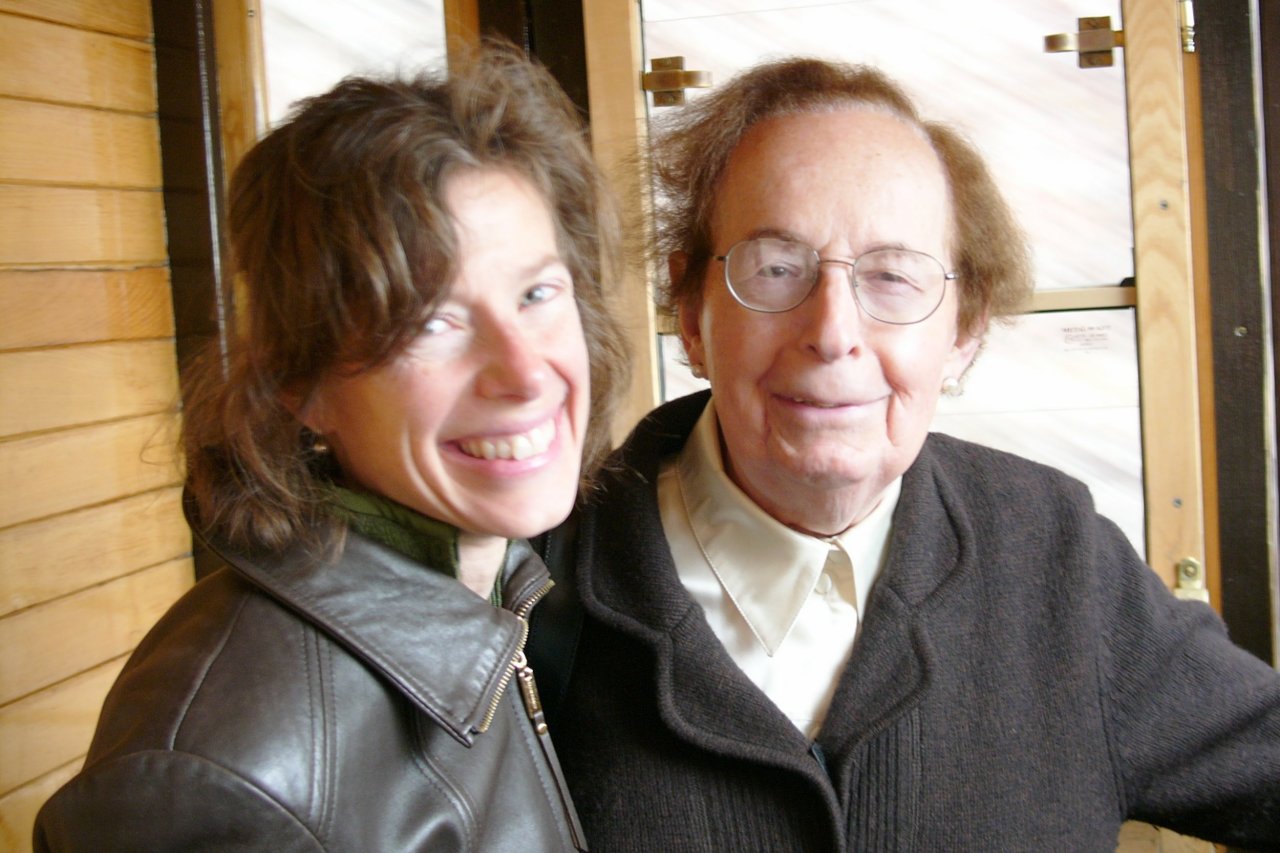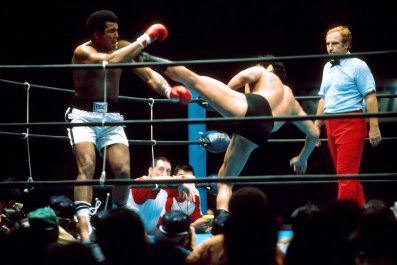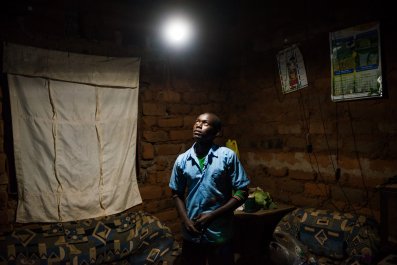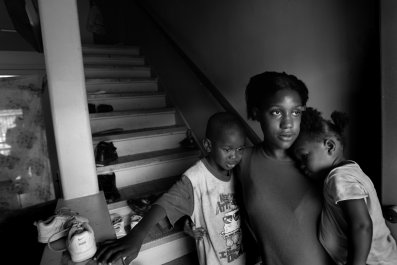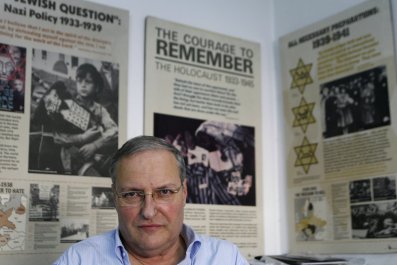Roughly a year ago, around when Caitlyn Jenner appeared in a bustier corset on the cover of Vanity Fair, it occurred to me that changing my gender at age 60 might be a good idea. By then, I will have lost almost all my feminine power, while men in my age group will be reaping the benefits of their lifetime of male entitlement.
In jest, I announced my plan to my teenage son , whose peers have trained him to be on the lookout for PC transgressions. "You'll have two daddies," I said. "You'll be OK with that, right?" His reply surprised me: "No," he said. "Because you'd be doing it for sarcastic reasons."
In the trans orthodoxy, the reasons why men or women reject their birth genders are supposed to be intrinsic and essential. Choosing to be a man for political reasons alone violates that creed.
Trans men and women realize, usually from childhood, that they are trapped in bodies with the wrong biological parts; in order to feel like themselves, they must become the other gender. In recent years, the movement to normalize such choices has been much more successful. Psychologists no longer see what used to be known as "gender identity disorder" as a disorder at all, and people are making decisions about gender transformation at younger and younger ages, with the support of parents and therapists.
To inquire more deeply into what drives such profound choices is generally avoided. But in her disturbing new book, In the Darkroom, Susan Faludi does just that as she explores the mystery of her father, a Hungarian Holocaust survivor, who in his 70s traveled to Thailand to become a woman.
Faludi's emotionally harrowing quest to understand her dad took her from Portland, Oregon, to Budapest and back numerous times. In the Darkroom is a tormented journey into the labyrinth of her father's history and psychology. It shows how gender identity may evolve over time, how it involves the body but also, perhaps, a complex host of social and psychological factors.
Faludi, a shrewd chronicler of gender bias and gender roles, is one of her generation's great feminist writers. In her latest book, she treads more personal ground by researching her father's soul. The two had mostly been estranged since she was a teenager; one terrifying night, he broke into the family home and stabbed her mother's boyfriend repeatedly, sending the man to a hospital. This act of violence not only went unpunished but it earned her father the right to avoid alimony (his estranged wife had a boyfriend and, under 1970s New York state divorce law, was guilty of infidelity).
In her quest to understand how her father, a violent, emotionally closed man, transformed himself late in life, she finds many clues—eroticism, Holocaust-related post-traumatic stress disorder, survivor's guilt, self-loathing and bad parenting. She even unearths a family story of her father possibly getting caught cross-dressing as a boy and an unsubstantiated tale about a maid dressing him as a girl.
A few years before the operation, her father's first psychiatrist declines to recommend him for sex change surgery, saying he is conflicted about his identity but not necessarily transgender. Undeterred, Faludi's father forges a letter about his fitness and need for the surgery and sends it to a Thai doctor, who is more than happy to have another patient.
After attempting to reveal her new body to the author by repeatedly letting her robe fall open, the elder Faludi tries to get her daughter to watch a video of her penectomy. She refuses but doesn't shrink from some deep family research.
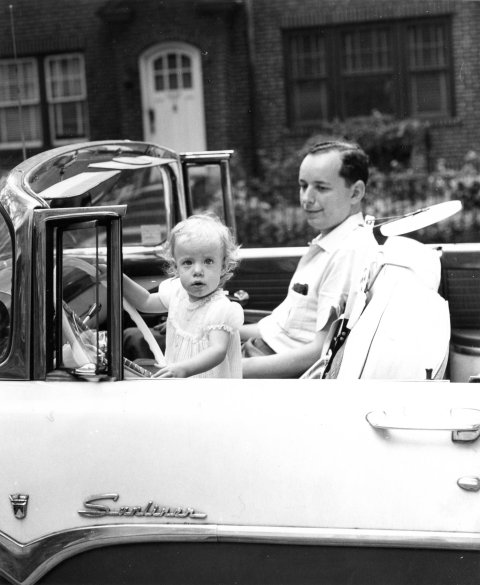
That intimate research project becomes the primary focus of the book, but Faludi also reveals the philosophical and political challenges she confronted in coming to terms with her father's new identity. Trans women often elevate feminine stereotypes in a way that many feminists find offensive. Faludi quotes trans writers who have accused feminists of being "narcissistic" and of secretly wanting to be men. This, Faludi notes, is simply "the old male chauvinist canard that feminists are feminists because they're anti-feminine." She can barely hold back when her father and her trans girlfriends talk about how happy they are to meet men who will do things for them, like carrying heavy furniture and operating power tools. She immerses herself in trans literature, admitting she "bridles" at the "cover images of junior-prom ingenues in sweater sets, their chapter titles set in the dainty looping script of old feminine-hygiene ads."
In mentioning this, Faludi is on dangerous political ground. Jenner was named "Woman of the Year" by Glamour magazine, despite the corset cover and despite the fact she hasn't done much of anything for women besides helping to raise the Kardashian sisters (and elevating their respective brands). Feminists recognize that transgender women still attract men but often don't experience the same sort of misogynistic discrimination as their counterparts who were born female. Put another way, there's a reason why the highest-paid female CEO in America, Martine Rothblatt, used to be a man.
Both men and women change genders, but it's the male-to-female transgender people who are seen as making bold political statements. It's hard to picture Esquire putting a female-to-male trans person on the cover and making him "Man of the Year." People magazine put one such individual on the cover but made him the star of "the pregnant man" story—a trans man with a uterus who gave birth—and he was framed as more of a freak show than a gender trailblazer
Given the amount of attention transgender people have been receiving, it's easy to forget that they seem to make up a minuscule percentage of the population. Good estimates are hard to come by, but the best figures, which come from a 2011 Williams Institute study, indicate that 0.3 percent of the population is trans. Of Americans who participated in the 2010 census, 89,667 had changed their names, and 21,833 had also changed their sex.
Yet the post-gender world is here. The popularity of the comically hypermasculine Donald Trump is certainly a reaction against that. Nothing divides the generations more than tolerance for transgender people. There are now more than 50 gender variations on Facebook. College professors struggle to speak in gender-neutral pronouns or lose their jobs. Meanwhile, discrimination against trans people is so strong that a social conservative movement has been built around gender-neutral bathrooms, which can be harnessed to entice a sector of the population into voting Republican.
The collapse of gender walls is a positive thing. Anything that breaks down old-time masculinity is good for men, women, children and animals. But the transgender community's embrace of hyperfemininity and its insistence that there is no difference between trans women and biological women has put it at odds with some feminists. There's a long history of resentment and conflict between the two groups. Last year, feminist Germaine Greer spurred a backlash when she stated that trans women "can't be women." She later backed out of speaking at a women's conference when some in the trans community mounted a petition against her.
Perhaps, at this stage in the evolution of gender roles, asking questions only weakens the front line. But if these matters are so unambiguous, where does that leave people like Melanie, who ran a guesthouse for post-op transgender women in Thailand? She had the surgery but confesses to Faludi she is having second thoughts about her life as a woman. "I feel I'm androgynous, but I don't want to be," she says. "People can't survive without categories…. You have to have an identity." By the end of the book, Melanie is again living as a man, but her penis is gone. Faludi makes no judgment; she simply lets Melanie talk about living with the type of regret that many in the trans community—including some surgeons—don't usually acknowledge.
Faludi presents her father's surgery in the context of a complicated, lifelong, protean search for identity. In the process, she compiles a taxonomy of identity hunting. There's the Nazi sort of identity that prevailed among Hungarian nationalists in the 1930s (and still exists today), and then there is the go-find-yourself model popularized by psychologist Erik Erikson in the 1960s. Faludi leaves it to the reader to consider whether the Nazis made her father so violent and hypermasculine, and whether a revulsion against them played a role in his decision to visit the clinic in Thailand.
Throughout the book, the author tries, but ultimately fails, to discover what made her father tick. Eventually, her quest becomes more conventional—she analyzes her own identity, delves into the Hungarian Holocaust and reconnects with her ethnic and spiritual roots. It is moving material, but I wish Faludi had gone further in examining the contradictions between feminism and male-to-female transitions. We are, after all, on the same side.



